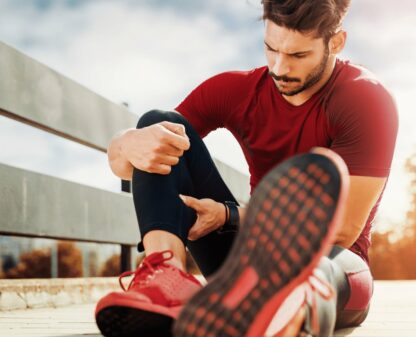Physical Modalities with Eccentric Exercise versus Eccentric Exercise alone in Chronic Achilles Tendinopathy

Introduction
Chronic Achilles tendinopathy is a condition characterized by highly localized pain at the insertion or slightly proximal to it. It can affect individuals of all ages and cause significant pain and disability. The chronicity of the condition makes it often hard to handle and a prolonged recovery should be expected. Eccentric exercise and several physical modalities have been researched to know whether they have a place in the treatment of Achilles tendinopathy. The effectiveness of eccentric exercise has been proven already in several systematic reviews, especially for mid-portion Achilles tendinopathy. Given that physical modalities continue to be used in the clinical setting, there is a need to ascertain their effectiveness as a potential adjunct to eccentric exercise, for which the evidence is already strong in Achilles tendinopathy. This study elaborates on that.
Methods
Randomized controlled trials on Achilles tendinopathy comparing physical modalities combined with eccentric exercises with eccentric exercise only were included. Chronic achilles tendinopathy was defined as symptoms 2-6cm proximal to the calcaneal insertion, lasting for more than 3 months that have not responded to non-operative management.
The outcomes observed were the VISA-A, which examines the clinical severity of Achilles tendinopathy on a scale from 0-100, the NPRS, and load-induced pain measured on the NRS. Outcomes were examined in the short-term (4 weeks) and long-term follow-up (12-16 weeks).
The studies had to include an eccentric exercise group as a comparator to a physical modality with an eccentric exercise program. The physical modalities included in this study could be shock wave, low-level laser therapy, night splinting, and Astym.
Results
In total, eight studies were included in the review, studying participants with chronic Achilles tendinopathy between the ages of 18 and 70 years. In total, 199 and 421 subjects were studied at the short-term and long-term follow-up respectively. In the physical modalities and eccentric exercise (PMEE) training group, 3 studies used shockwave, 2 used low-level laser therapy, 1 study used night splints, 1-foot orthoses, and 1 Astym.
At short-term follow-up, no differences were found between the PMEE and EE on the VISA-A (SMD=0.03 (95%CI -0.46-0.53)) and NPRS (SMD=-0.16 (95%CI -0.72-0.40)). Load-induced pain was not investigated at 4 weeks.

At long-term follow-up, no significant differences were found for the VISA-A (SMD=0.43 (95%CI -0.05-0.92)), NPRS (SMD=-0.39 (95%CI-1.11-0.32)) and load-induced pain (SMD=-0.46 (95%CI -1.08-0.15)) between the PMEE and eccentric exercise group.

Questions and thoughts
The long-term follow-up results on the VISA-A reveal that the effect is borderline, not significant in favor of eccentric exercise therapy. Yet, high to moderate heterogeneity in these results leads us to conclude that the conclusions should be interpreted carefully. It is hypothesized that eccentric exercise leads to improvements in the tensile strength of the Achilles tendon, which further reduces strain. The proposed physical modalities are not producing such an increase in tensile strength, and thus are ineffective in the management of Achilles tendinopathy.
Talk nerdy to me
The limitation of English studies could have introduced a language bias into the results. Nonetheless, as the risk of bias was low, high-quality studies have been included, leading to firm results. The authors revealed that there was no indication of publication bias. Apart from that, the methodology of the present study was well performed, meeting the requirements for systematic syntheses and meta-analyses.
Take home messages
As physical modalities like shockwave and low-level laser therapy give no additional benefit compared to eccentric exercises only, the latter option remains the mainstay of treatment for Achilles tendinopathy. As this review was able to include high-quality low risk of bias studies, the certainty of the evidence is high. The eccentric exercise dosage for Achilles tendinopathy synthesized from these high-quality studies suggests 3 sets of 15 repetitions performed twice a day for 12 weeks both performed standing on a flexed and extended knee.
Reference
WHAT TO LOOK FOR TO PREVENT HAMSTRING, CALF & QUADRICEPS INJURIES
Whether you’re working with high-level or amateur athletes you don’t want to miss these risk factors which could expose them to higher risk of injury. This webinar will enable you to spot those risk factors to work on them during rehab!



